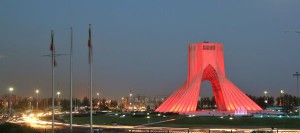 Iran is preparing for take-off. At least this is how The Economist concluded a recent analysis of investment opportunities in the country. Judging from media coverage such as this, and the flurry of diplomatic activity in Tehran, the decision by Iran to roll back its nuclear activities in exchange for relief from international sanctions has already triggered a gold rush. After all, despite decades of sanctions, Iran remains the 18th largest economy in the world.
Iran is preparing for take-off. At least this is how The Economist concluded a recent analysis of investment opportunities in the country. Judging from media coverage such as this, and the flurry of diplomatic activity in Tehran, the decision by Iran to roll back its nuclear activities in exchange for relief from international sanctions has already triggered a gold rush. After all, despite decades of sanctions, Iran remains the 18th largest economy in the world.
Data from the United Nations Educational, Scientific, and Cultural Organisation (Unesco) indicate that enrolment at Iranian universities has more than doubled in a decade. In 2013, 58% of Iranians aged 18 to 24 were studying at Iranian universities. The government has set the target at 60% for 2025 and it is on track to reach this goal. Overall, Iranian parents spend more than £2.1 billion on the higher education of their children. With the lifting of sanctions, this financial commitment is likely to increase significantly, given the importance that Iranians ascribe to education.
Whereas Iran’s undergraduates are well accommodated in the country’s higher education institutions, the postgraduate infrastructure is much less developed. International cooperation could be most successful in this sector. As a result, the British Council concluded in a recent study, Iranian postgraduate students are likely to look abroad for opportunities: “In 2024, the US is forecast to be the top destination of the six selected markets for Iranian postgraduates, of whom 11,900 will study in the US. Other strong postgraduate flows of Iranian students will be to Germany (5,700), Canada (2,800) and the UK (2,700).”
This trend is attributable to demand outstripping supply in Iran itself, which has led to a brain drain of talent from the country.

